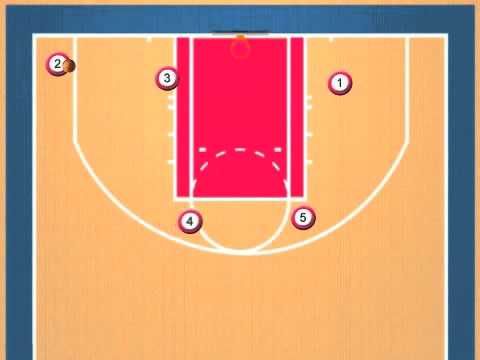Home »
Misc »
How to beat a full court press in basketball
How to beat a full court press in basketball
A simple, effective and flexible full-court press break
Attacking and breaking full-court pressure defense is no different than attacking any other kind of defense. Emphasize both an attacking mindset and good shot selection. Try to keep everything simple, while providing players with a few basic reads and adjustments so they are able to handle a variety of pressing situations.
Alignment for press breakThe alignment of all five players in this press break provides good spacing and is consistent with their positions in our numbered fast break. This alignment is used against all types of full-court pressure.
DIAGRAM 1: Alignment for press break. 4 always is the inbounder. Teach 4 to move quickly to the inbounding spot outside the backboard with the ball already on the throwing shoulder and with eyes looking down the floor — much the way a quarterback sprints out from the line of scrimmage in football. The point guard (1) initially sets up at the elbow in line with 4 and 5 initially set up at half court where the center circle meets the half-court line.![]() 3 always is on the right side as your team heads down the floor, with 2 always on the left. Both 2 and 3 initially set up close to the foul-line extended. You don’t want them crowding 1.
3 always is on the right side as your team heads down the floor, with 2 always on the left. Both 2 and 3 initially set up close to the foul-line extended. You don’t want them crowding 1.
Entries into playThere are three basic entries out of this press breaker. The first is to 1, which is the primary look against most presses. Talk to 1 about not dancing and moving a lot to get open. Teach 1 to get a good seal and try not to catch the ball below the block, much like you would teach a low-post player when discussing half-court offense. If 1 is fronted, 1 simply walks the defender to the block, seals the defender and 4 lobs the ball over the defender provided there isn’t any backside help. If 1 is being three-quartered or played behind, 1 seals the defender and breaks to the ball.
DIAGRAM 2: ‘Point clear.’ Once 1 catches the ball, the next movements are based on the defense. If it’s a man defense, go with the “point clear. ” 4 curls to the middle of the floor after passing to 1. 5 empties to the opposite free-throw line area. 2 and 3 maintain their 15-18 feet of spacing from 1. Once 1 reads it is a man press, 1 yells “Clear!” and 2, 3 and 4 clear down the court keeping vision with the ball. It is critical for 1 to wait for 4 to curl to the middle before proceeding up the floor with the dribble so that 4’s defender isn’t as readily available to double-team.
” 4 curls to the middle of the floor after passing to 1. 5 empties to the opposite free-throw line area. 2 and 3 maintain their 15-18 feet of spacing from 1. Once 1 reads it is a man press, 1 yells “Clear!” and 2, 3 and 4 clear down the court keeping vision with the ball. It is critical for 1 to wait for 4 to curl to the middle before proceeding up the floor with the dribble so that 4’s defender isn’t as readily available to double-team.
DIAGRAM 3: ‘Point zone.’ If 1 reads the press is a zone, 1 calls “Zone!” and 4 stays in the middle, trying to get the ball from 1, 2 or 3 as those players reverse or skip the ball to one another. 5’s job is to go to the ball-side sideline whenever the ball is in one of the wings’ hands. This gives an additional look up the floor, occupies one of the defenders in the back of the press and opens up the back side of the press. If 4 does catch the ball in the middle, 4 looks at the back-side wing cutting toward the basket (in this case 2).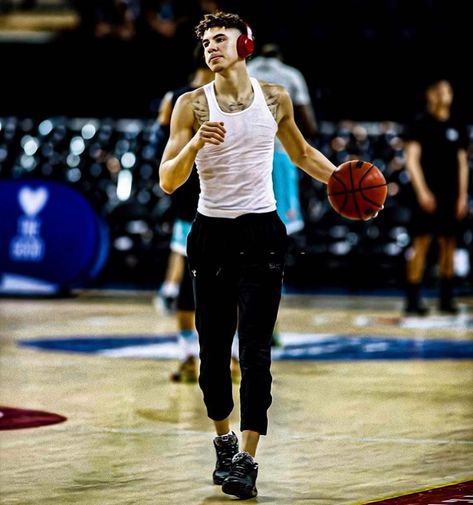 Zone presses tend to have all five defenders on the ball side of the floor, so if 4 does receive the pass from 1, both wings should cut and 4 reads which one is open since the press defenders will not have committed to one side of the floor.
Zone presses tend to have all five defenders on the ball side of the floor, so if 4 does receive the pass from 1, both wings should cut and 4 reads which one is open since the press defenders will not have committed to one side of the floor.
The second entry goes to one of the wings. Have 2 and 3 “V” back to the ball. As with 1, you do not want a wing catching the ball below the block as this is prime trapping position for the defense.
DIAGRAM 4: ‘Wing clear.‘ If 3 catches the ball (as in the diagram), 5 goes to the ball-side sideline in the back court. This avoids the risk of an over-and-back violation. 1 breaks to the middle of the floor and 4 steps in. 3 must read whether the press is man or zone. If 3 reads man press, 3 yells “Clear!” and 1, 2, 4 and 5 clear down the floor keeping vision with the ball.
DIAGRAM 5: Wing zone. If 3 reads zone press, 3 calls “Zone!” and 1 stays in the middle trying to get the ball from 3, 4 or 2 as those players reverse or skip the ball to one another.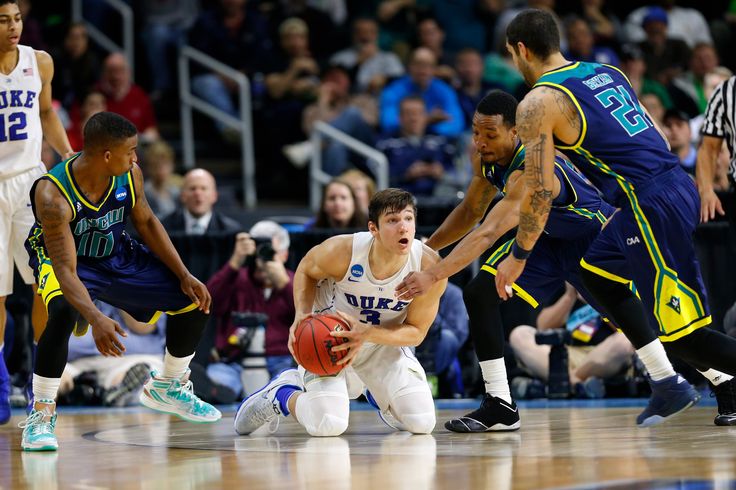 Once again, 5’s job is to go to the ball-side sideline whenever the ball is in a wing’s hands (once the ball goes from the wing back to 4, 5 slants down the middle of the floor from his ball-side sideline backcourt position to the opposite foul-line area). If 1 does catch the ball in the middle, 1 attacks the press on the dribble, since 1 is the primary ball handler.
Once again, 5’s job is to go to the ball-side sideline whenever the ball is in a wing’s hands (once the ball goes from the wing back to 4, 5 slants down the middle of the floor from his ball-side sideline backcourt position to the opposite foul-line area). If 1 does catch the ball in the middle, 1 attacks the press on the dribble, since 1 is the primary ball handler.
The third entry is called the “5 Entry,” as the ball is being entered to the 5.
DIAGRAM 6: ‘5 Entry.’ If 1, 2 and 3 are having problems getting open, 5 flashes hard to the ball-side elbow. 4 makes a high, two-hand overhead entry pass to 5. 1 and 3 backdoor with 3 continuing all the way to the opposite free-throw line and 1 curling back to the middle of the floor. 5 hits either player, if open. Meanwhile, 4 steps in and 2 holds position at the opposite wing. If 1 or 3 are not open, 5 gets the ball back to 4 and widens out to the wing spot vacated by 3. 3 now takes 5’s press break responsibilities and vice versa.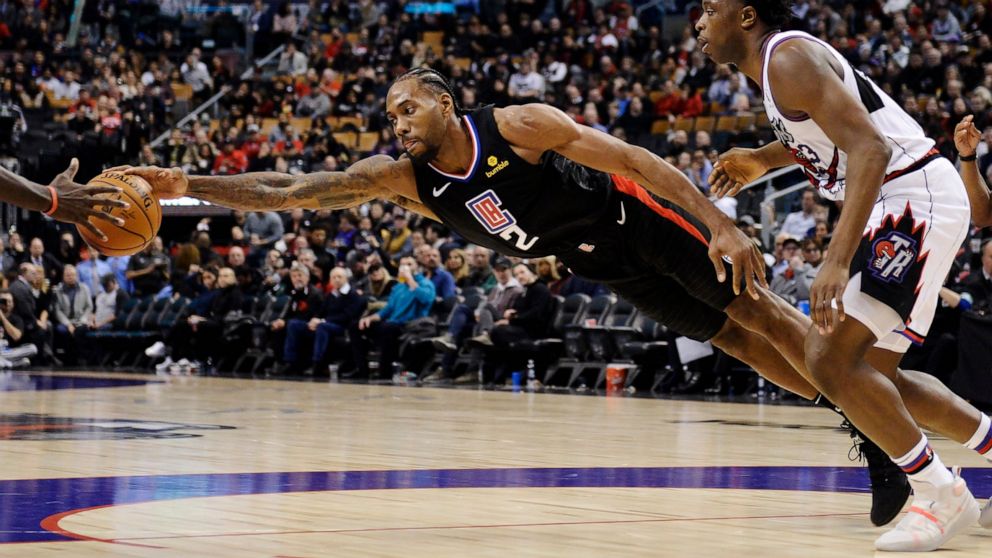
Adjustments to press breakerDifferent scenarios force you to adjust your press breaker. Try these four adjustments to keep the ball moving into the front court.
DIAGRAM 7: Box. This is used against full-court man defense in total denial. 1 stays at the usual ball-side elbow. 5 is on the other elbow. 3 is halfway between the elbow and the half-court line aligned with 1. 2 is in the same position as 3 on the other side of the ball. When 4 slaps the ball, 1 screens up for 3, who cuts to the right-side wing. 1 then comes back to the ball in the middle of the floor. Simultaneously, 5 screens up for 2, who cuts to the left-side wing. 5 slips the screen looking for the long pass from 4. You now are back in your regular press-break alignment.
DIAGRAM 8: Loop out & fill. This is used against a hard wing trap and denial of the three immediate receivers. 4 passes to 3. 3 now is being trapped. The other three defenders are denying 5, 1 and 4. 1 must release down the floor and loop out to the wing spot. This causes 1’s defender to follow. 2 flashes hard to the area 1 has vacated, gets the ball from 3 and immediately passes to the back side to 1. This should create an opportunity for 1 and 5 to run a 2-on-1 break.
3 now is being trapped. The other three defenders are denying 5, 1 and 4. 1 must release down the floor and loop out to the wing spot. This causes 1’s defender to follow. 2 flashes hard to the area 1 has vacated, gets the ball from 3 and immediately passes to the back side to 1. This should create an opportunity for 1 and 5 to run a 2-on-1 break.
DIAGRAM 9: 21 flash. This is used against a 2-1-2 press. If 4 is being locked up in the press by the middle zone defender, the opposite wing (in this case 3), flashes from behind the defense into the open area to give the defense another look.
DIAGRAM 10: Even. If 1 reads a soft 1-2-2 or 1-3-1 three-quarter or half-court press, morph the press break into a half-court trap offense by calling out “Even!” and having 3 fill the middle, 4 and 5 fill the wings and 1 and 2 fill the guard spots.
Coaching pointsThere are five main coaching points to consider with these press breakers.
1. The end result either should be a layup or a shot in the paint, otherwise, your offense needs to pull the ball out and start the offense. Don’t take quick, long shots.
2. Against man pressure, emphasize to the guards to stay in the middle of the floor as they bring the ball up the court. They also need to make extensive use of the crossover, pullback and hesitation dribble. No spin dribbling! Spin dribbling increases the effect of a surprise trap or a run-and-jump attack.
3. Against zone pressure, emphasize — particularly with the wings — that they must look up the floor after catching the ball. The progression ideally should be middle (to 1), sideline (to 5), skip (to 2 or 3 depending) and back to 4.
4. In practice, work on press breakers more in 5-on-0 rather than 5-on-5. It’s more important for your players to know where they are supposed to be and what their reads are, rather than knowing exactly what an opponent’s press is going to do. Plus, you may not have enough skilled players to duplicate the opponent’s press.
Plus, you may not have enough skilled players to duplicate the opponent’s press.
5. Make sure your players are very conscious of the six trapping areas, or corners, that an effective press tries to exploit.
1-4 Press Break to Score on Any Full-Court Defense
There are many factors that go into winning and losing basketball games:
- Shooting
- Rebounding
- Free Throws
- Press Break Offense
However, at the high school level and below, I don’t think anything will lose a game faster or more frequently than a team’s inability to handle pressure.
We've probably all had teams that have excelled in a controlled half court game, but immediately lost their poise when the opponent began to press.
As a coach, there’s nothing more frustrating than helplessly watching from the sidelines as your team commits countless turnovers when the other team extends its defense.
But it doesn’t have to be this way!
One of the most important jobs a basketball coach has is to equip players with the skills, mindset, and alignments needed to attack pressure.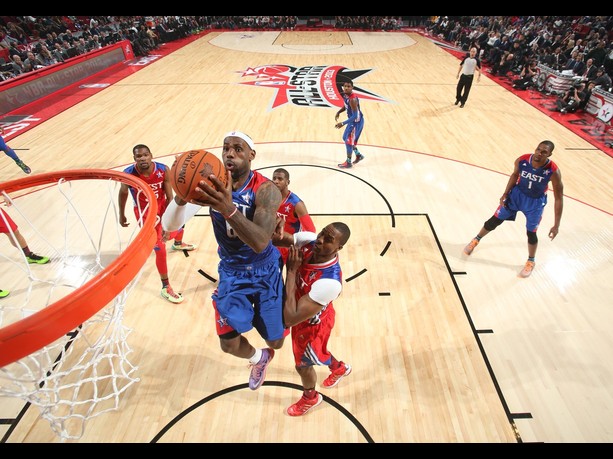
Each of these elements is crucial – without one, the other two are not nearly as effective.
The 1-4 press break is one sound way of attacking man or zone full court pressure.
Check out the diagrams and options below to see if this type of attack will work for your team.
Utilizing the 1-4 Press Break
One of my favorite ways to attack full-court pressure (man or zone) is with the 1-4 press break.
Below I’ll tell you why you should use it and I’ll show you how it works.
Let’s get started:
Benefits of the 1-4 Press Break:
a. Can be Effective Against Man and Zone PressesThe best press break alignments are versatile. Against a team that changes defenses, you don’t want your players looking to the sideline waiting for a play call. The 1-4 alignment eliminates that confusion because it can be used against any pressing defense.
b. The Alignment Makes Denial More DifficultSome pressing teams try to deny all inbound passes. If your alignment has players deep down the floor, the defense will be able to do this more effectively. By bringing all players up, it eliminates back side help, opening up potential deep passes if the defense denies.
If your alignment has players deep down the floor, the defense will be able to do this more effectively. By bringing all players up, it eliminates back side help, opening up potential deep passes if the defense denies.
c. Forces Opponent’s Post Players to Defend Full CourtThis is another benefit of bringing everyone up against a press. Opponents will need to make a choice: Do I bring up everyone, including a potentially slower post player, or do I just let the ball inbounds? Against many teams, either option could benefit the offense.
d. You Can Attack to ScoreMost 1-4 press breakers eventually send a player down the floor. This still allows your team to hunt layups after it breaks the press. In fact, having a player start high and then break down the floor is more difficult to guard than simply stationing a player deep for the whole possession.
e. It’s FlexibleThere are many things you can do out of a 1-4 alignment.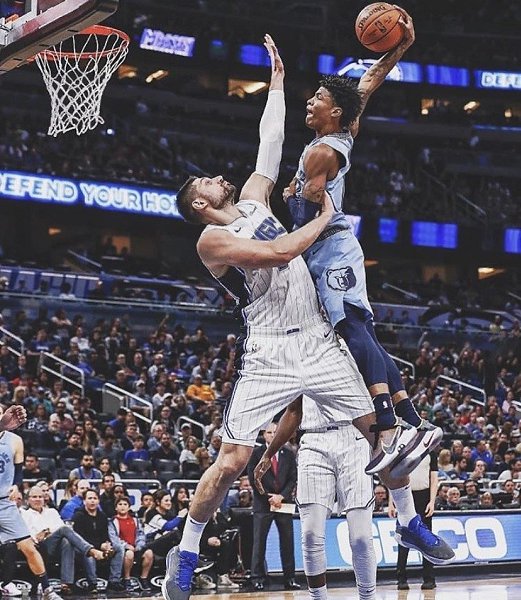 We will show a few options in the next section, but you can use your imagination to adjust the press breaker to fit the personnel on your team.
We will show a few options in the next section, but you can use your imagination to adjust the press breaker to fit the personnel on your team.
1-4 Press Breaker Options:
Option #1: 1-4 Alignment vs. Zone PressureCommon zone presses include the 2-2-1, 1-2-2, and 1-2-1-1 presses.
This alignment can be effective against any of these looks.
Consider the best way to use your personnel.
For example, do you want your point guard to receive the first pass, or would you rather he or she attack up the floor on the second pass?
In the diagrams below, notice how the offense maintains sideline, middle, reverse spacing.
In these diagrams, the fifth player is used in the “deep diagonal” position.
If the ball is reversed, players fill both sidelines and the middle.
Option #2: 1-4 Alignment vs. Man-to-Man PressureAgainst man pressure, you probably want to set screens to help your players get open.
This can be done in many ways, but one option is diagrammed below.
Again, players can be positioned however suits your team, but notice one important detail in the diagram:
Player 5, typically a post player, sets the second screen for Player 1, the point guard.
This is usually a good idea because two advantages could be created against a switching defense.
First, your point guard will usually be quicker than the opposing post player.
Second, your post player should be able to seal an opposing guard.
Another possibility is for Player 5 to screen his or her own defender, making the switch more difficult.
If the ball is inbounded to a good ball-handler, you can clear out of their way vs. a man-to-man defense.
Some defenses will not trap, instead choosing to pressure the ball handler 1-on-1.
If this is the case, your guard should not have trouble and it is better to give them space.
Some teams will let the ball handler start to dribble, then will leave from another player and trap.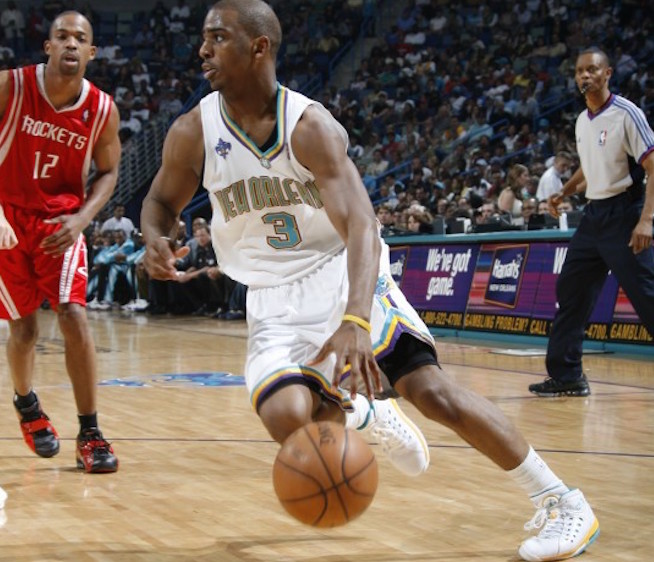 This is where the pullback dribble is necessary.
This is where the pullback dribble is necessary.
In the diagrams below, notice how, as the trap occurs, Player 1 uses a few pullback dribbles and the other teammates are “pulled” to the ball handler into the sideline, middle, reverse position.
Option #3: 1-4 Alignment vs. Extreme DenialTeams that completely sell-out to deny the inbound pass can be very difficult to play against.
While the second option can certainly be effective against these teams, you may want to have another option as well.
This look is good for teams that negate your screening actions with effective switching.
For example, athletic teams with five players of similar size and quickness may be able to switch without giving up significant size or speed disadvantages.
Against those teams, it may be smarter to maximize space rather than setting a lot of screens.
In the diagrams below, the defense is in a full court man-to-man face-guarding defense with the inbounder’s defender playing “centerfield. ”
”
The offense counters by all four potential pass receivers walking their defenders as close to the baseline as possible. This shortens all passing options and creates even more space to operate.
Once the ball is inbounded, all offensive players should have an advantage.
The ball-handler can simply read the centerfielder and pass the ball ahead.
This is a great way to alleviate pressure by forcing the defense to become less aggressive.
8 Press Break Tips and Skills to Master:
a. Screen and Seal vs. DenialNo press breaker will be effective if you can’t inbound the ball safely.
If you’re facing a team that denies the inbound pass, you probably want to utilize screens to help free your ball-handlers.
However, your screeners MUST be ready to receive a pass after screening.
This is because many pressing defenses will switch all screens.
If a player screens a teammate’s defender, he or she should pivot in a way that keeps the switching defender on their back.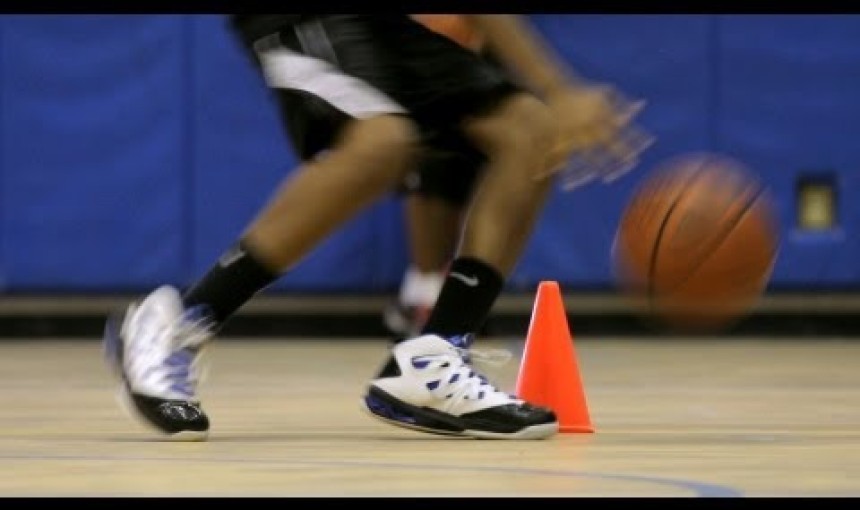
b. Screen Your Own Man vs. SwitchesAnother strategy against a switching defense is to screen your own defender.
Think about it...
If the defense wants to jump out and switch on all screening actions, screening your own defender makes it difficult for them to do that.
This type of screen can free a teammate to receive the ball.
c. Run the Baseline After MakesFinding a good inbounder is sometimes difficult.
One simple habit to teach your inbounders is to run the baseline after a made basket by your opponent.
If the strong side of the floor is not open, the inbounder can run to the other side to explore options there.
This shortens a potential pass to the opposite side.
d. Sideline, Middle, ReverseThis is a crucial part of attacking man or zone presses that like to trap.
Any time there is a trap, you want (1) sideline, (2) middle, and (3) reverse options.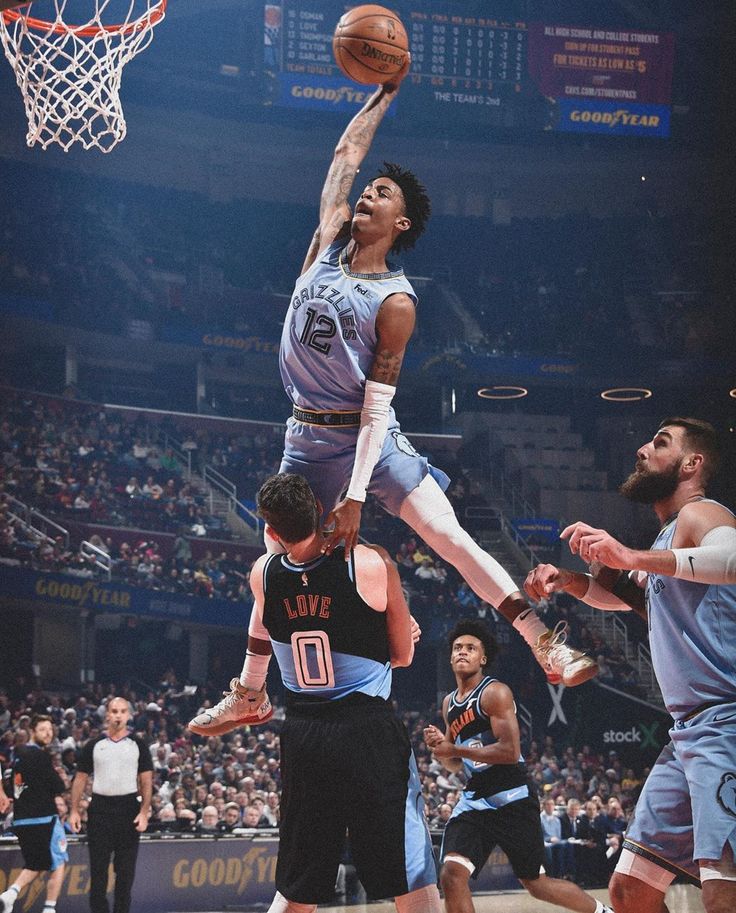
Some coaches like the fifth player to be diagonal, while others prefer him or her to be deep.
Regardless, these first three options are essential.
This is because it is very difficult for the defense to put two players on the ball while still covering sideline, middle, and reverse options.
With proper spacing, the player being trapped must simply remain poised and find the open teammate.
e. Use Ball FakesFull court presses are, by nature, aggressive defenses.
Jumpy defenders can be moved and manipulated with clever ball fakes.
If you want to pass to the middle, fake a pass up the sideline, or vice versa.
Ball fakes can take some of the aggression out of a defense.
f. Pullback Dribble vs. TrapsThis is the most important type of dribbling against trapping defenses.
Many man or zone presses attempt to bait the ball handler into dribbling before coming to trap.
This is fine.
Good players don’t mind being trapped because they know that traps create openings for the offense. However, you must create space to make those passes.
Pullback dribbles allow you to get that space.
Execute a pullback dribble by turning your shoulders so that the ball is behind you, putting your chin on your top shoulder so that you can see the floor, and taking big push steps back to create space.
As a ball handler uses a pullback dribble, his or her teammates should come back to the ball to shorten the pass. Think of it as the ball handler pulling teammates toward them.
Skilled ball handlers may be able to pullback and attack the other direction off the dribble (“pullback and reattack”), but most players will want to beat the press with the pass.
g. Play With Your Eyes UpThis sounds simple, but it is harder to execute when facing a double-team.
Players must be trained to maintain vision of the floor.
Most full court presses leave a player, sometimes multiple players, open down the floor.
The problem is that ball handlers panic and simply don’t see them.
Emphasize vision in practice and reinforce it through the use of film so that your players learn the importance of seeing what options are available.
h. Score Early or Late in the ClockTeach your players that the goal of press offense is to SCORE!
If you are content with simply getting the ball across half court and running offense each possession, there is no risk for the defense and they will just press more aggressively.
However, shot selection is crucial when playing against full court pressure.
Your first priority should be attacking the press for a layup.
If a layup (or a quality shot from a good shooter) does not materialize, then you can run your offense and seek a better shot.
Remember, many pressing teams want to speed you up.
If your press offense only creates quick long-range jump shots, you are probably playing right into the hands of the defense.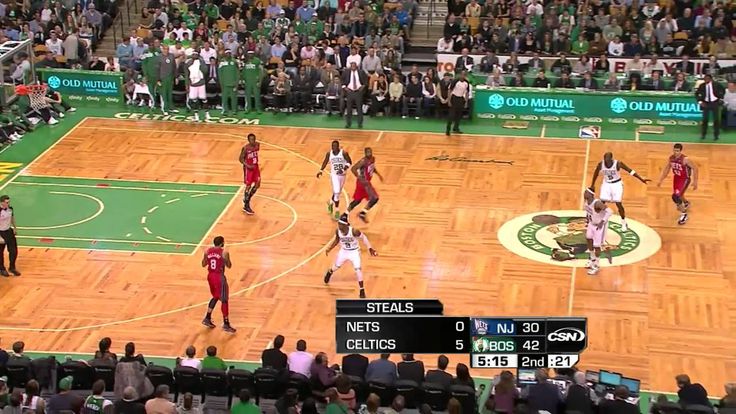
Conclusion:
At some point in your season, you will encounter a team with strong full court pressure.
Will your players be intimidated, or will they feel prepared to attack the defense for layups on the other end?
By emphasizing the proper skills, mindset, and alignments, you can prepare your team to excel in these high-pressure moments.
Basketball coaching hacks: how to score goals for beginners
Even if you are a novice basketball player, we will not give you a training plan, but we will tell you why the ball flies anywhere but into the ring and into your hands. It's all about technique: even with regular training and perseverance, novice adults and children often make simple mistakes. It's a shame, let's fix it. Below are 11 life hacks on how to hone your technique to increase the likelihood of a goal for your team.
Basketball Shot Rules for Beginners
1. Hands up
In pursuit of the attacker, raise your hands, even if you are standing with your back to the pass, and even more so if the ring is in front of you. Your raised hands will increase the chance of intercepting the ball from the opponent by 2 times. Don't overlook this little thing!
Your raised hands will increase the chance of intercepting the ball from the opponent by 2 times. Don't overlook this little thing!
2. Make shield rolls
Even Tim Duncan did not neglect them! A square is drawn on the basketball backboard. If you are standing opposite the ring, then aim at the middle of the upper part of the square, if you are standing on the side, then at the corner. If you hit this square, then the ball is at 90% of cases will fall into the ring. The law of physics and no cheating!
3. Look at the ring, not at the ball
Practice driving the ball with your hand, not your eyes, develop tactile control. Your eyes should be on the hoop while dribbling and be aware of the position of your body in relation to the hoop. Then you will be able to take the correct posture, and the throw will be effective.
4. Dribble with the balls of your fingers only
The palm should not touch the ball, only the pads of the fingers. Dribbling should become familiar to you, like an extension of your hand. Then you can change its trajectory at any time and you will have more chances to score goals. Practice with the ball constantly.
Dribbling should become familiar to you, like an extension of your hand. Then you can change its trajectory at any time and you will have more chances to score goals. Practice with the ball constantly.
5. Throw with one hand
If you throw the ball with two hands, you reduce the chance of hitting the basket. All the efforts of the throw are in one hand (in the right for right-handers, in the left for left-handers). The other hand only holds the ball, the leading one holds it with the fingers, not the palm.
6. Do not jump when protecting the ring
Jumping is the main mistake of rookie defenders. To intercept the ball and block the shot, simply stick out your hands. When you are in a jump, the attacker will easily bypass you.
7. Don't look back
When you dribble, don't look back, but dribble and aim for the ring, focus on shooting (or passing to another player on your team).
8. Bring the throw to automatism
Incorporate the most basic basketball techniques into your training plan and bring the shot to automatism. Throw at first from a distance of half a meter from the ring, gradually increasing it. Learn to throw the ball so that it hits the hoop without touching the edge.
Throw at first from a distance of half a meter from the ring, gradually increasing it. Learn to throw the ball so that it hits the hoop without touching the edge.
Throw the ball with all fives and jump
Throwing Rules:
- Head in the center of the body - if tilted, accuracy is lost.
- Look at the ring: mentally build a trajectory. If you are far away, the ball flies in a curved curve with a maximum height of 2 meters above the hoop.
- A strong hand is in front and throws, a weak hand is on the side and directs, only holding the ball. The elbow of the throwing hand must be in line with the ring.
- The ball must rest on the fingers without touching the palm. The fingers are as far apart as possible and grab the ball.
- Throwing arm bent 90 degrees, forearm perpendicular to the floor. If you bend less, then you get not a throw, but a throwing of the ball horizontally.
The main thing in the throw is the position of the body and its balance.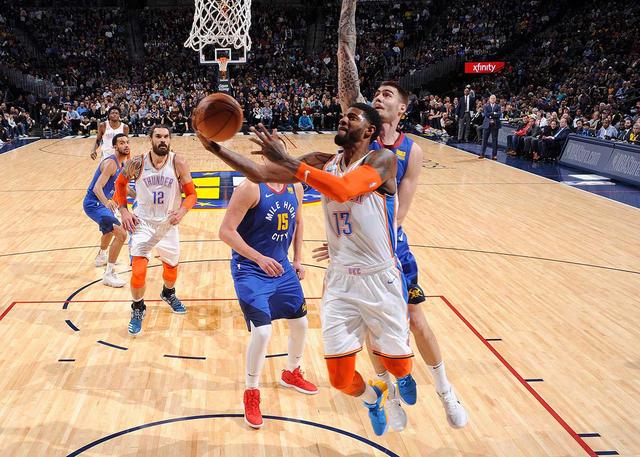 Place your feet apart and parallel to each other: it is important to orient them in the middle of the basket. Then the direction of the body during the jump will coincide with the direction of the throw, and the ball will fly straight into the ring. When the feet are uneven, the ball flies in the wrong direction or does not reach (although the throw was normal).
Place your feet apart and parallel to each other: it is important to orient them in the middle of the basket. Then the direction of the body during the jump will coincide with the direction of the throw, and the ball will fly straight into the ring. When the feet are uneven, the ball flies in the wrong direction or does not reach (although the throw was normal).
Take a deep breath and release as you exhale.
How to hold the ball and shoot in basketball
How to throw correctly: straighten your arm, point your wrist up, and with your hand set the ball to rotate in the opposite direction from the flight. The ball should seem to "roll" off your fingers.
9. Copy masters and play as a team
Watch professional basketball games and try to copy the movements of your favorite players in training. And be sure to conduct game sparring - this will allow you to develop more techniques.
10. Do not throw in a straight line
The higher the arc of the ball, the greater the chance of a goal and the less chance of blocking by the opponent.
11. Do not throw the ball from a full height stand
This is the biggest newbie mistake!
Before the throw, bend your knees slightly and at the moment of the throw, straighten your body, making a jump. You need to straighten up and push off the ground at the same time. When squatting, keep the elbow of the throwing arm close to the body and towards the ring.
The jump will give momentum to the ball and will allow you not to make sudden movements with the brush.
***
And to be a long-term player, do not forget about your health: take care of your joints and muscles, use tapes, do a warm-up. And be sure to strengthen your arms, legs and shoulder girdle, develop coordination. Regular exercises on uneven bars and horizontal bars will help you with this.
Slamdunk Journal :: Basketball techniques
Our phone number is 8-800-500-62-63.
What techniques exist and how they differ
Let's first deal with the definition: playing techniques are skills that a professional player must possess. Sounds simple, but what exactly are the skills in basketball? What should an amateur who wants to improve the performance of his game pay attention to? Let's figure it out.
Sounds simple, but what exactly are the skills in basketball? What should an amateur who wants to improve the performance of his game pay attention to? Let's figure it out.
The main goal in basketball is to successfully hit the ball into the basket, and everything that happens on the court only brings the players to this moment. There are skills that basketball players work out in training to bypass rivals and make a successful shot.
Before we list them, let us remind you that basketball is a team sport, and even the most successful players do not master all the tricks perfectly. With a serious approach to training, you should decide on your position on the site and especially carefully work out the necessary techniques.
So the post must deftly pick up the ball under the basket and throw it right into the basket. Back row players are highly regarded for their ability to pass and make accurate shots from medium to long distances. And for an attacking basketball player, it is extremely important to be able to make lightning-fast breakthroughs to the ring. All these techniques and skills are practiced in training.
All these techniques and skills are practiced in training.
What are the basic skills?
- Holding the throw. Performed with two hands. Widely spaced fingers hold the ball from both sides. One of the basic skills for any player.
- Catching the ball. Another basic skill that no basketball player can do without. But are you sure you know how to do it right?!
The easiest way to catch the ball is at chin level. To do this, you need to take a small step forward and stretch your hands towards the ball with widely spread fingers - a “funnel”. In this case, the thumbs should be directed towards each other and brought together up to 3-5 centimeters. This will save you from slipping and hitting the ball in the face if you catch it at high speed. At the moment the ball touches the fingers, you need to make a shock-absorbing movement and transfer it to the chest. When catching the ball above the head, the actions are similar, but it is necessary to extinguish the speed of its flight from the top-front, and then transfer it to the chest in an arc.
One of the most difficult tricks is catching the ball flying behind. Such a pass is often used to quickly break through to the opponent's ring. For him, without slowing down, make a slight turn of the shoulder and head towards the ball, and then catch it with the far hand and move it to the chest with a raking movement.
Basic passing techniques:
There are several technically correct ways to pass the ball. One of the most basic is a transfer with two hands from the chest. In this position, the ball is most protected from the attacks of opponents, and besides, the transfer from the chest is the most accurate and reliable, regardless of whether it is carried out on the spot or while the player is moving.
- Two-handed downshift is more commonly used after stops and turns. During the swing, the ball is taken to the thigh, after which it is sent to another player with a sharp movement of both hands. Such a transfer is effective for beating especially tall opponents.

- One-handed passes are less accurate and more often used when speed is important. Their development should be given special attention in training in order to achieve maximum strength and accuracy.
- The shoulder pass is used when the ball needs to be passed as far and as fast as possible, and the hook pass, performed in an arcing motion, is good for passing the opponent.
- To get around a nimble and agile opponent, a rebound pass will also be good. It can be done with one or two hands. In this case, the push of the ball must be strong, and the rebound point must be closer to the receiving player.
What about dribbling?
Dribbling is the most basic thing in basketball. What makes this sport different from the rest. Simply put, dribbling is dribbling. It allows the player in possession of the ball, without violating strict basketball rules, to enter a position convenient for attacking, approach the ring and score the ball. The dribbling is carried out by elastic pushes of the ball with the fingers.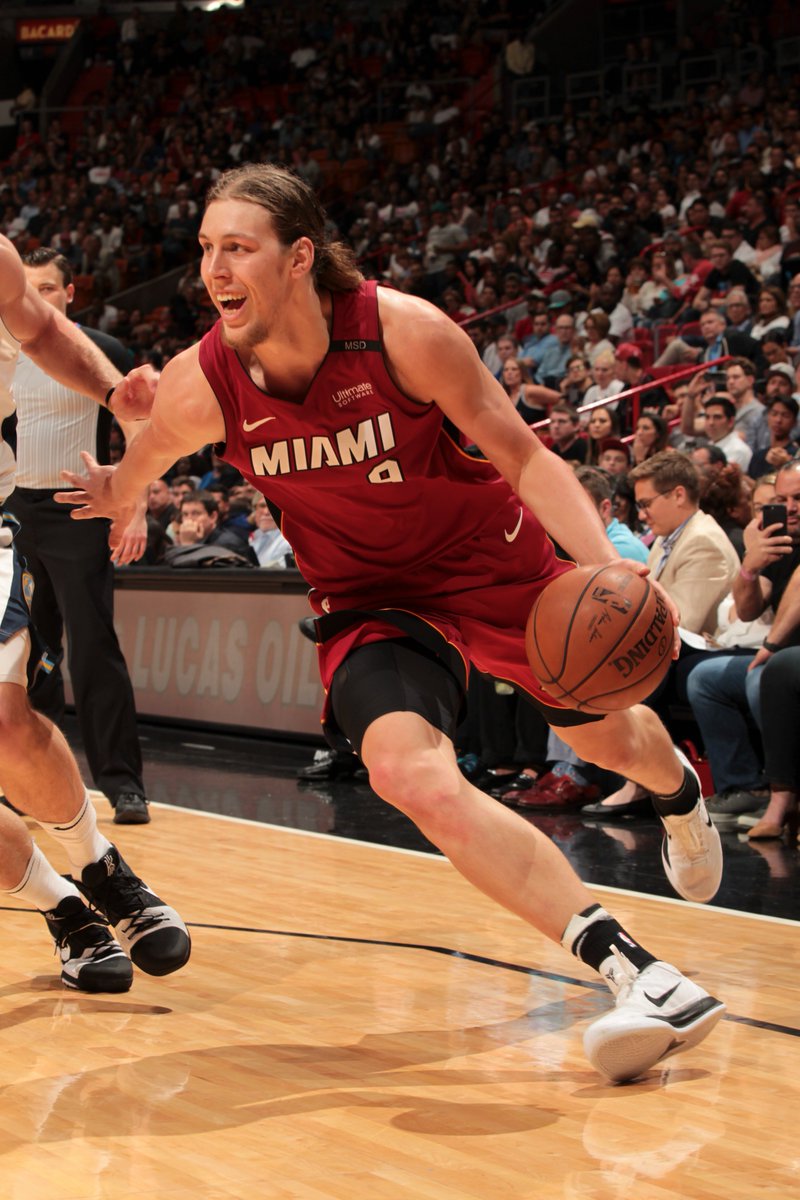 It is dribbling that should be given special attention in training beginners.
It is dribbling that should be given special attention in training beginners.
Well-developed dribbling technique will teach you not only how to move on the court, but also skillfully take the ball away from your opponents, which will bring you closer to the coveted ring.
But we already wrote about how to properly throw the ball into the ring in our other article;)
Slamdunk.su
Other articles
How to throw the ball correctly in basketball
And what types of throws exist
We look and understand
Why 'The Last Dance' is one of the best shows of the year
Knee exercises
How to strengthen get rid of pain.